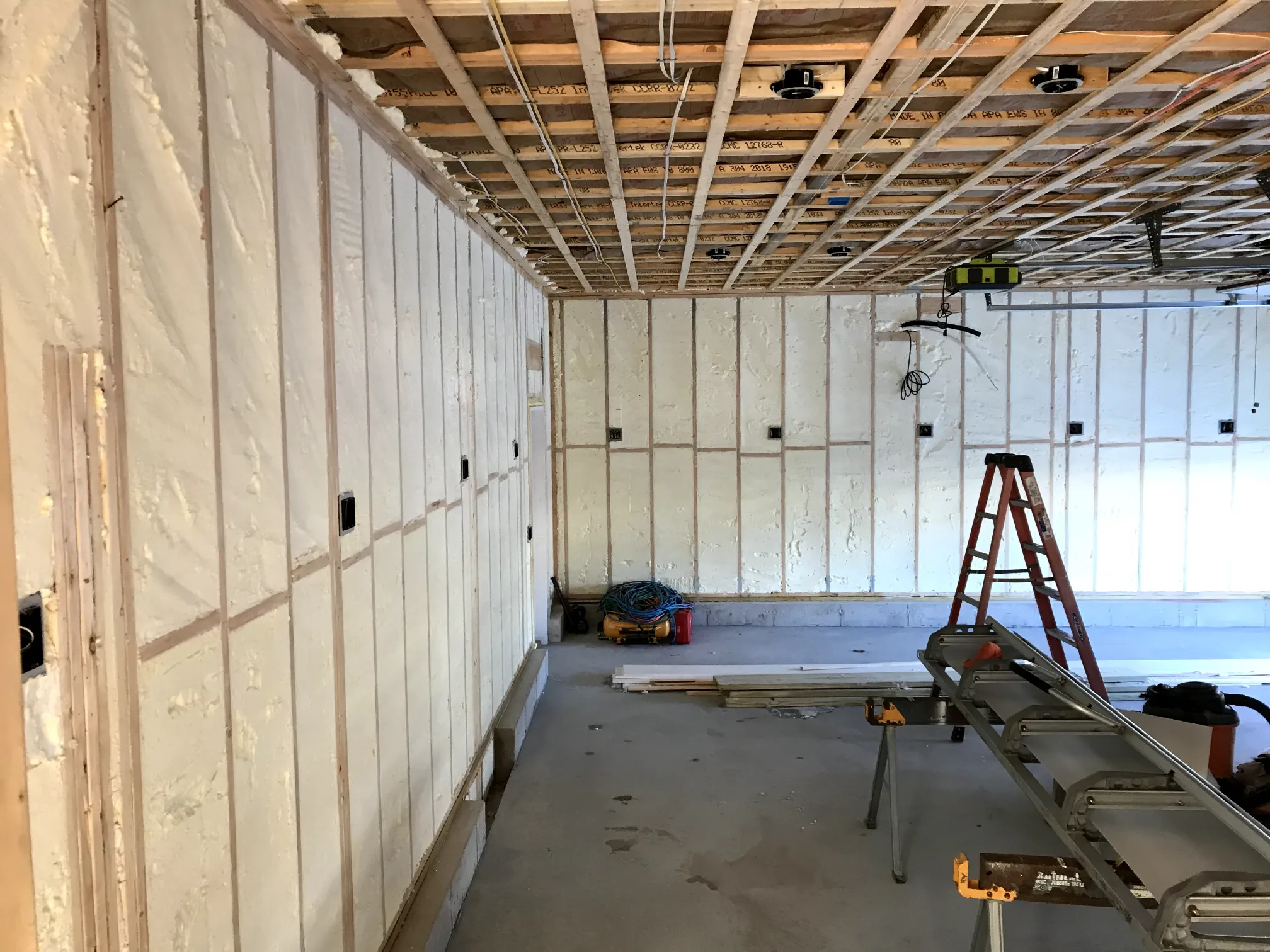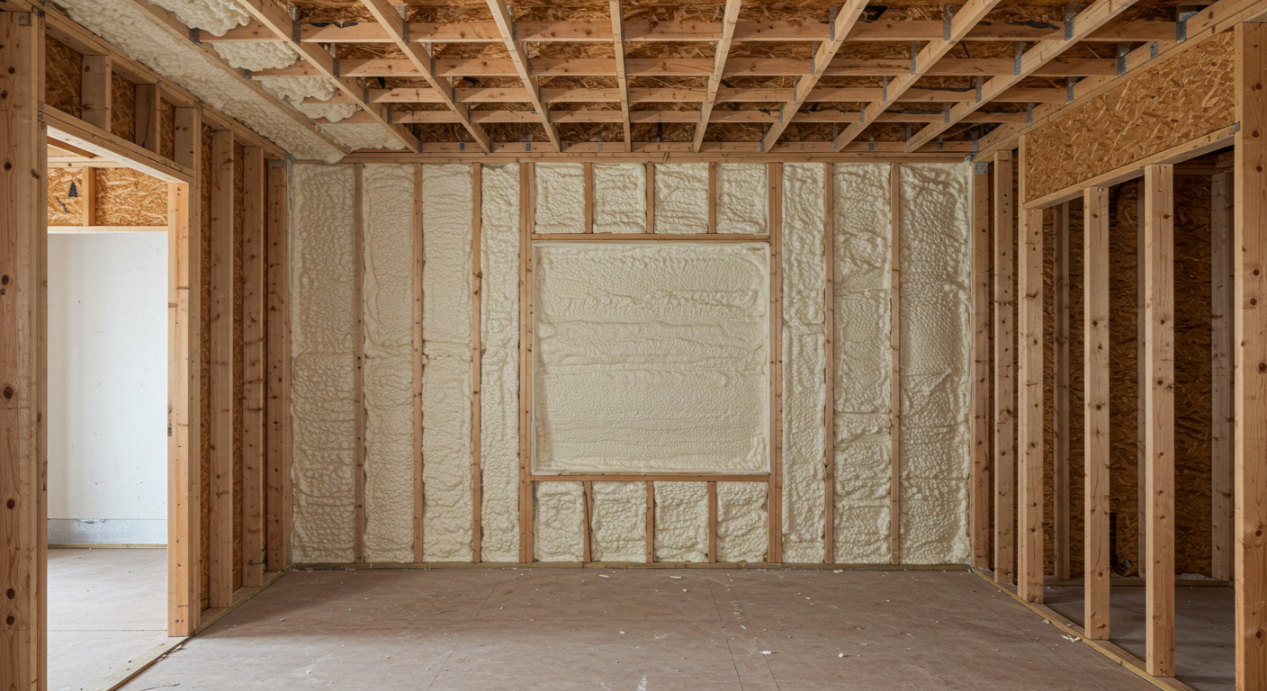
Spray foam insulation, when applied too thin, can lead to persistent moisture problems, energy inefficiencies, and structural vulnerabilities. In the climate of Hardwick, MA, where temperature swings and humidity levels can strain building envelopes, thin applications of spray foam often fail to deliver the air-sealing and R-value performance needed for consistent protection.
Improper installation thickness compromises the thermal barrier, allowing cold spots, drafts, and potential mold growth. Lamothe Insulation & Contracting has observed a pattern of callbacks directly linked to under-applied spray foam highlighting the need for precision during installation and post-application verification. This guide explains how thin spray foam impacts long-term performance and provides region-specific insights.
The rural and wooded geography of Hardwick contributes to high seasonal humidity. Thin spray foam doesn’t form an effective vapor barrier, enabling moisture migration through walls and attics. Over time, this creates conditions ripe for mold, especially in older wood-framed homes.
Bonus Tip: Always check vapor barrier requirements in your local building code before selecting spray foam type.
Open-cell spray foam applied too thin lacks the density to prevent heat loss. This can lead to thermal bridging where heat escapes through studs and framing members leading to uneven temperatures and elevated energy bills.
Comparison Table: Minimum Effective Thickness
| Spray Foam Type | Minimum Effective Thickness | Air Seal Achieved | Vapor Barrier | Common Failures from Thin Application |
|---|---|---|---|---|
| Open-Cell Spray Foam | 3.5 inches (R-13) | Partial | No | Air leakage, condensation inside wall cavities |
| Closed-Cell Spray Foam | 2 inches (R-13) | Yes | Yes | Cracking, insufficient thermal performance |
Spray foam expands as it cures. When applied too thinly or unevenly, it may not bond correctly to wood or masonry. This separation can compromise the insulation’s air seal and lead to material shrinkage or cracking during temperature shifts.
Bonus Tip: Always use infrared scanning post-application to verify continuity of coverage particularly in corners and framing interfaces.
| Specification | Open-Cell Foam | Closed-Cell Foam |
|---|---|---|
| R-Value (per inch) | 3.5 – 3.7 | 6.0 – 7.0 |
| Vapor Permeability | 10 perms | <1 perm |
| Application Temperature | 60-100°F | 60-100°F |
| Expansion Ratio | ~100:1 | ~30:1 |
| Structural Rigidity | Low | High |

According to a 2024 report by IBISWorld, the U.S. insulation market grew 4.6% in Massachusetts alone, driven by energy code updates and utility rebates . Yet, field inspections across Worcester County revealed that 17% of spray foam jobs failed to meet thickness guidelines set by manufacturers.
Lamothe Insulation & Contracting provides the following services to ensure accurate application and insulation performance:
Use a depth gauge or thermal imaging camera. Professional inspection can identify inconsistencies invisible to the eye.
Yes, but reapplication must be carefully bonded to existing layers. A second pass must follow manufacturer curing intervals.
Look for temperature variations on walls, moisture spots, or visible cracking in foam surface.
In areas prone to moisture and freezing, closed-cell offers superior protection due to its vapor resistance and rigidity.
Contact Lamothe Insulation & Contracting for an evaluation of your current insulation or for expert spray foam installation that meets regional building code standards.
Phone: (508) 847-0119 Email: [email protected]
Closed-cell foam can last over 30 years if applied correctly and protected from UV exposure.
Yes, especially if off-gassing occurs due to improper curing. Thin foam may not fully cure or bond, leading to VOC emissions.
Yes. Manufacturers often require minimum thickness for performance guarantees.
Massachusetts energy code typically requires R-13 to R-21 in walls depending on assembly. Always check current local codes.
Yes. Inconsistent application, missed cavities, or under-application can result in long-term damage and costly corrections.